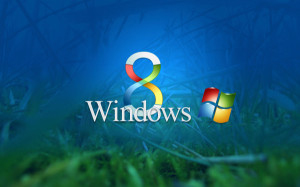
Windows 8′s user share in October climbed past the 10% milestone for the first time since the launch of the radically-overhauled OS a year ago, an analytics company said Friday.
The operating system’s share of all computing devices running Windows, a tally that included Windows 8.1, rose to 10.2% in October, according to California-based metrics company Net Applications.Yet the gain, just fourth-tenths of a percentage point, was sluggish compared to past advances, and represented only half the monthly average over the last 12 months and a third of the increase of September alone.The slower increase signalled that the OS took a breather in its uptake race, most likely caused by the one-two punch of the end of back-to-school sales in September, and a pause in purchases as buyers awaited new hardware with Windows 8.1 and the higher-than-usual discounts many experts believe will mark this year’s holidays.
Within the broader category of Windows 8, the 2012 version’s share fell for the first time as Windows 8.1 – the free update that debuted two weeks ago – accounted for nearly a fifth of the total 10%.
Windows 8 also increased its lead over Windows Vista, the 2007 edition that has been labeled one of Microsoft’s rare flops. When each OS’s share was compared 12 months after launch. Vista accounted for 8.2% of all Windows PCs, two points under Windows 8′s. However, Microsoft’s newest operating system remained far behind Windows 7 at its 12-month-after-launch mark, when the latter powered 20.1% of all Windows systems.
The next two months will be important in gauging Windows 8/8.1′s performance. While some analysts remain cautiously optimistic that the turn to Windows 8.1 and new device designs – including Microsoft’s recent refresh of its Surface tablets – will reverse the six-quarter industry contraction and revive Windows fortunes in the critical holiday selling season, Microsoft itself was less certain.
“In [Devices and Consumer] Licensing, we expect revenue to be $5.2 billion to $5.4 billion,” Microsoft CFO Amy Hood said two weeks ago, as she spelled out the company’s guidance for the fourth quarter to Wall Street. “We expect the business PC market to be stable; however, the consumer PC market is subject to more volatility.”
For the fourth quarter of 2012, Microsoft recorded $5.7 billion in revenue for the Devices and Consumer division’s Licensing group, where sales of Windows to computer makers are logged. Hood’s guidance, then, means Microsoft anticipates a 5% to 9% year-over-year downturn in Licensing’s revenue for the quarter ending Dec. 31.
While Windows 8 grew only slightly – and Windows 7 stayed flat – Windows XP’s march to retirement decelerated last month. The connection was not a surprise, since most consumers and businesses replace XP not by upgrading in place, but with new hardware and thus new operating systems.
The aged OS lost just one tenth of a percentage point of share, falling to 34.5% of all Windows machines, at least temporarily delaying the mass migrations some expect before next April, when the 12-year-old OS stops receiving security updates.
In August and September, XP shed six percentage points, a record two-month decline.
Last week, Microsoft again beat the XP drum, citing data from its malware cleaning tools to claim that customers who don’t dump the OS before it’s retired face a 66% increase in attack code infections.
Windows 7, the business-standard replacement for XP, powered an estimated 51.2% of all Windows systems in October, Net Applications said. Meanwhile, Microsoft recently pegged Windows 7′s share in the enterprise at a significantly higher 75%.
Windows continued to run the vast majority of personal computers — 90.7% — last month, but Apple’s OS X ended October with a 7.7% user share, or about 1 out of every 13 systems worldwide, a new record. Linux finished October flat at 1.6%.
Net Applications measures operating system user share by tracking unique visitors to approximately 40,000 sites that rely on its traffic analytics software.
Windows 8 accounted for more than 10% of all computing devices running a Microsoft OS in October.





